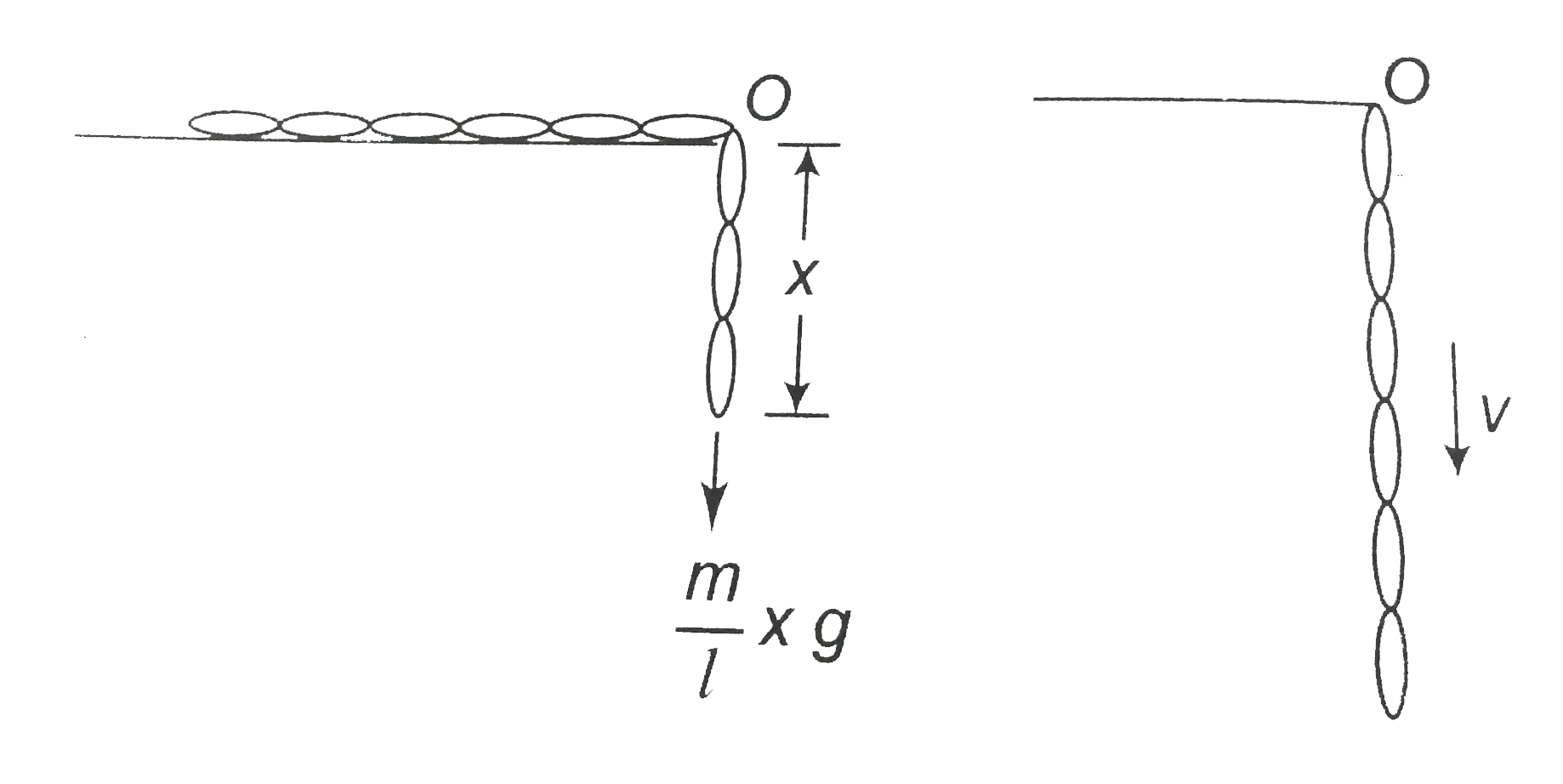A uniform chain of mass m and length l is placed on a smooth table so that one−third length hanges freely as shown in the figure. Now the chain is released, with what velocity chain slips off the table?

Let at some instant the hanging length be x.

pulling force =mlxg, pulled mass =m
Acceleration of chain a=mlxgm=g(x)l
vdvdx=g(x)l
∫v0vdv=gl∫ll/3xdx
∣∣∣v22∣∣∣v0=gl∣∣∣x22∣∣∣ll/3
v22=g2l×{l2−(l3)3}=g2l{t2−l29}
v2=gl×8l29=8gl9
v=2√2gl3
Topper's Solved these Questions
Similar Questions
A uniform chain of mass m and length l is lying on a horizontal table with one-third of its length hanging over the edge of the table.

What is the speed of the chain, when it just loses contact with the table?
View SolutionA uniform chain of mass m and length l is lying on a horizontal table with one-third of its length hanging over the edge of the table.

If the chain is limiting equlibrium, what is the coefficient of friction for the contact between table and chain?
View Solution
Knowledge Check
A uniform chain of length l is placed on a smooth horizontal table, such that half of its length hangs over one edge. It is releasedfrom rest, the velocity with which it leaves the table is
A√3gl4B√3gl2C√2gl3D√gl3A chain of mass m and length l is placed on a table with one-sixth of it hanging freely from the table edge. The amount of work. done to pull the chain on the table is
Amgl/4Bmgl/6Cmgl/72Dmgl/36A chain of mass m and length l is placed on a table with one-sixth of it hanging freely from the table edge. The amount of work. done to pull the chain on the table is
Amgl/4Bmgl/6Cmgl/72Dmgl/36
A chain of length L and mass M is held on a frictionless table with (1/n)th of its length hanging over the edge. When the chain is released, find the velocity of chain while leaving the table.

View SolutionA uniform chain of mass m and length l is kept on a horizontal table with half of its length hanging from the edge of the table.Work done in pulling the chain on to the table so that only 1/5 th of its length now hangs from the edge is K(mgl200) .Find the value of K.
View Solution(a) Why can we not associate a potential energy with the frictional force as we did with the gravitational force ? (b) A uniform chain of mass m and length I is lying on a table with (1/4) of its length hanging freely from the edge. Find the amount of work required to be done in dragging the chain on the table completely.
View SolutionA uniform chain of mass m & length L is kept on a smooth horizontal table such that Lnportion of the chaing hangs from the table. The work dione required to slowly bringsthe chain completely on the table is
View SolutionA uniform chain of mass 4 kg and length 2 m is kept on table such that 3/10th of the chain hanges freely from the edge of the table. How much work has to be done in pulling the entire chain on the table?
View Solution
